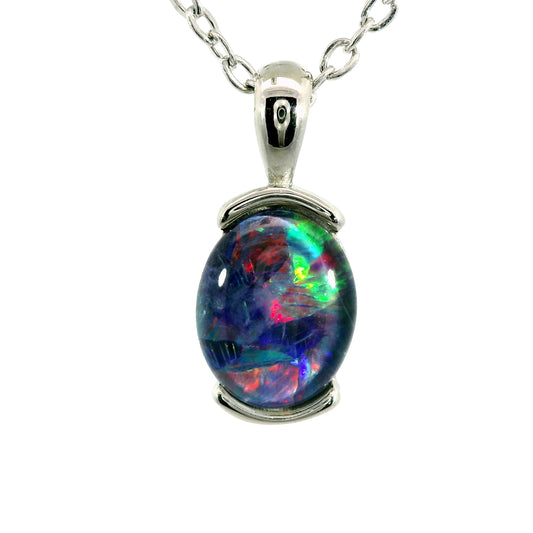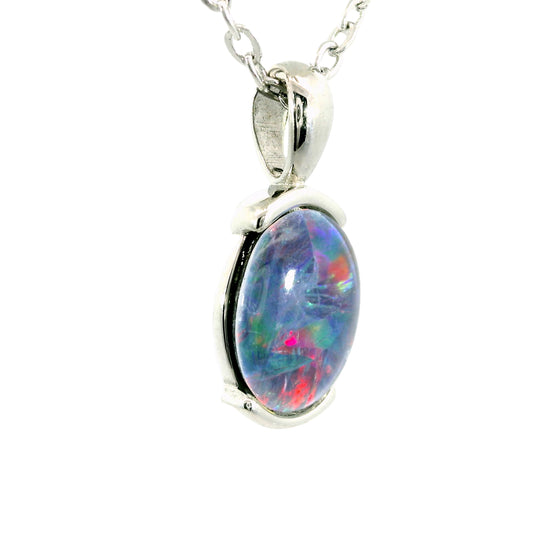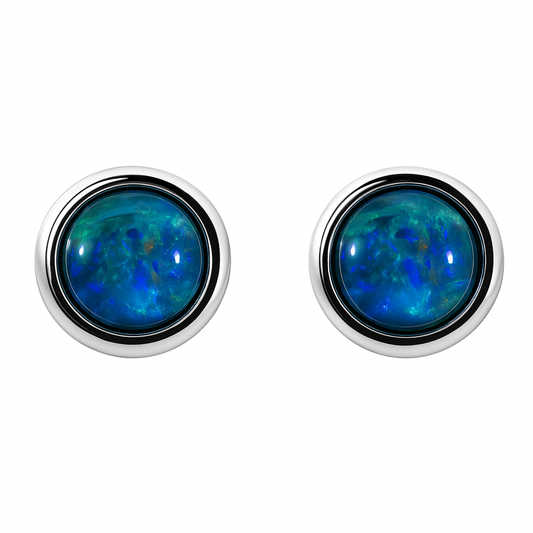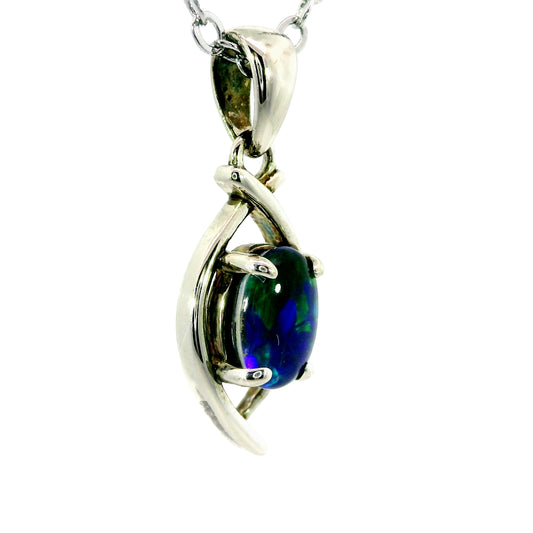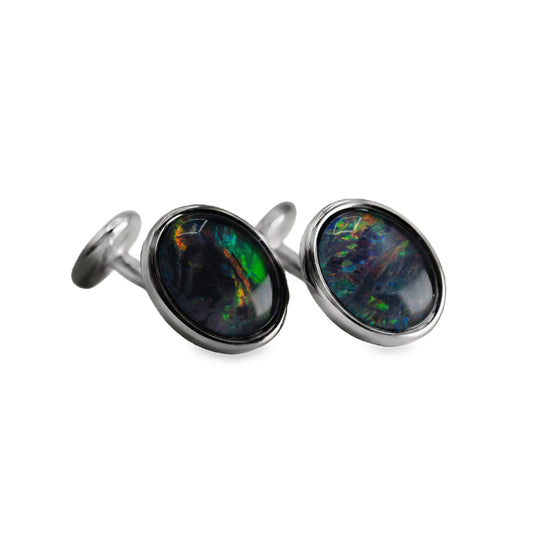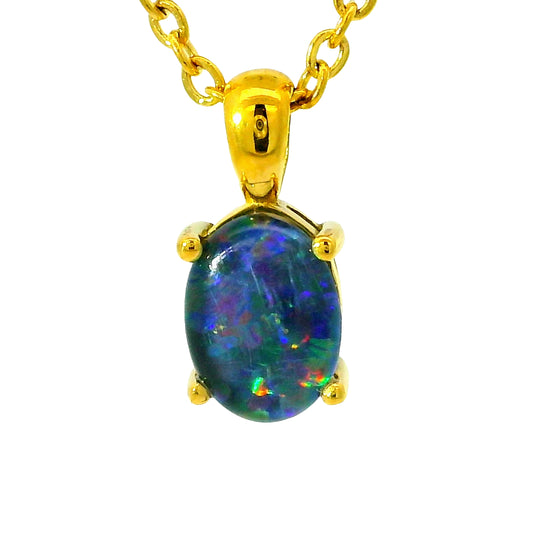The World Record for the Largest Black Opal in existence!
Q. Is this the most expensive Opal in Australia?
This is the World's largest Australian Black Opal according to the Guinness Book of World Records!
Q. Is Black Opal Expensive?Australian Opals are arguably 1000x rarer than Diamond and the worlds #1 rarest commercially available gemstone! so they are valuable...but not expensive!
Q. How much is Black Opal worth?
Natural Australian Black Opal with a distinctive pattern is arguably 5,000x rarer than Diamond! Black Opals are so many Opal miners spend years moving thousands of tonnes of dirt before they are lucky enough to find one of these Gemstones.
This is truly an iconic Australian Black Opal -- Recorded in 1990 edition of the Guinness Book of World Records as the "Largest Black Opal Ever found"- the largest black opal in the world. This is a truly priceless gemstone and if Opals received as much marketing and promotional dollars as Diamonds do this would be sold for many millions of dollars.
Australian Opal is genuinely sold for far less than the Opals are truly worth. What this means is that if all the Diamonds in storage all over the world were released onto the market today, you could basically afford to buy as many as you wanted to (because the market would be flooded as Diamonds are actually NOT rare). Opals however are extremely rare but sold for "what you can get for them"
This precious Opal gemstone is worth millions of dollars but expected to sell for $700,000+ at auction.
Weighing 443.56 carats, it is known as ‘The Pacific’ because of its colour and the Pacific, being the largest ocean. Black opals have the most brilliant colours and are the most sought-after form of the gem.
To put this in perspective, most Opal engagement rings have gemstones in them weighing from 1.00 Carats to 3.00 Carats. So at 443.56 Carats this truly is an investment or collectors piece.
"The Pacific" was listed as the world’s largest black opal in the 1990 Guinness Book of World Records. It remains the largest, polished, solid-form Black Opal to this day.
Where do opals come from?
This amazing Opal is being sold by the man who found it, Lightning Ridge opal miner, Gerard O'Brien. Gerard said: "This was mined in an "Open Cut" seam mine in the Glengowrie country, it was found in a large seam with a lot of material. It covered with a lot of potch and we could see some of the colour in the side, about 1/2 inch was all you could see in the side. We got a lot of colour in the run, my wife Denise had two other girls cutting the red we found from low grade red to high grade red we were cutting for six months. We couldn't sell enough at the Ridge at the time so we decided to come to Sydney a week a month and we'd walk around the retailers and the wholesalers and we'd show this big Opal and they would say "come-in, come-in" it was a door opener.
There are plenty of people who have larger stones, but they are full of Potch and there are no large "faces" out there like that.
If you are looking for Opal, if you are going to find Opal you have to have a certain type of sandstone that is porous to water where there was an inland sea. If you find that sandstone the Opal colour will be under it.
Q. How does Opal form?
The CSIRO still doesn't know how Opal is made.My cousin was a partner with me an the Mines department called us "Batman and Robin" and the Mines Department named our mine "Gotham City"This is an incredible Opal that is unique and a collectors item and a great way to invest in something that will increase in value.

Value characteristics Judgement Variety Natural Black Opal Type 1 Body tone Grey N2 (3) Brightness Bright Transparency Opaque Colour Combination Green-Blue Colour Saturation Rich Tones Outline Free Shape Profile Shape Baroque Face Origin Lighting Ridge Colour Pattern Broad Blocky Pattern Face Colour Directionality Good from All Angles Face Colour Percentage Over 80% Inclusion No Inclusions Carat Weight 433.56 
The Opal Variety
Natural Black Opal Type 1
From the family of opal which shows a play- of- colour within or on a dark body tone which, when viewed face- up, may be designated N1 to N4 (1-9 on the Scale of Body Tone).The dark background serves to highlight the colour-play of dramatic spectral flashes. During its formation, the replacement of organic material by Silica resulted in carbonaceous material or impurities like
titanium and/or iron oxide impregnating the mineral structure giving Black Opal its dark body colour.The Body Tone
Black N2 (3)
This Opal has been assessed as Black N2 (3) on the Scale of Body Tone. The prefix “N” reflects the neutral tone of this scale and the number approximates the degree of ‘darkness’ of the base tone of the Opal.Brightness
Bright
It is not uncommon to observe several levels or variations of brightness in the face or body of an Opal. The assessment of ‘Bright’ is made on the overall impression of the Opal as presented in ‘normal/natural’ light.Transparency
Opaque
This Opal presents as opaque. The Opal is not able to be ‘seen through’, it is not transparent.Colour
Green-Blue
The spheres that generate Opal colour range in size from 1500 to 3500 angstroms (1 angstrom is 1 ten millionth of 1 millimetre). This Opal displays a predominantly Green-Blue colour spectral colour range which is a result of larger spheres (no larger than
about 350 nm). There are approximately 3 million "larger" spheres lined up within the space of a millimetre. Increases in sphere ‘uniformity’ increase colour intensity or brilliance.Tone Hue
This Opal displays Rich Tones Tones which categorise the relative mixture of the color with any neutral color (including black, gray, or white) which may reduce the chroma, or colour saturation of the Opal,Outline (Shape)
The Opal has been cut into a Free Shape ShapeProfile
The profile as represented as the outline when viewed from the side is a Baroque Face Cabachon.Field of Origin
The Field of Origin for the Opal gemstone is Lighting RidgeColour Pattern
The Opal displays a Broad Blocky Pattern Pattern where a number or elements of a variety of patterns may be seen.Display / Face Colour Directionality (“Play of Colour”)
This Opal presents a display or colour directionality that is Good from All AnglesDistribution / Face Color Percentage
Opal quality is markedly affected by the ‘depth’ of pattern and amount of 'fire' showing on the face. This factor is judged from the stone’s best angle. Very few, with the exception of 'Flash' pattern stones, will show 100% of the face covered in colour. Consequently a sparse ‘distribution’ of colour attracts a lesser value. The distribution or face colour percentage presented in this Opal is Over 80%Inclusions Percentage
This Opal does not have any 'eye visible' inclusions (Eye Clean) 'No Inclusions'












































































































